The Schoolyard cocktail
Gin, wild chamomile, and lemon.

As I mentioned in another post with more general information about wild chamomile, I used to smell and sample wild chamomile (Matricaria discoidea), otherwise known as "pineapple weed" on the schoolyard, hence the name for this drink. Now I forage it where I can (which is pretty much everywhere in the spring and early summer), wash it, and make a wild chamomile simple syrup with it to be used in cocktails. I played around a bit with this cocktail, including other liquor such as Salers or adding grapefruit bitters, but ultimately it was best to let the wild chamomile syrup shine by keeping it simple. Recipe below is for one cocktail.
1.5oz gin (Bar Hill gin or St.George Terroir would both be good choices)
0.5oz meyer lemon juice
Pineapple weed for garnish
Shake and serve up with pineapple weed flower.

Wild Chamomile Simple Syrup
Cocktail flavor from between the cracks.

Wild chamomile, or pineapple weed grows almost everywhere and is very distinctive.
Wild chamomile, Matricaria discoidea, has a wonderful fragrant aroma that makes for great cocktails. Learn more about this edible weed here. One simple way to incorporate the flavor into cocktails is by infusing a simple syrup with the flowers and leaves of the weed. Not only is this syrup fantastic in cocktails, such as The Schoolyard, but it's also lovely in lemonade, ice tea, drizzled over ice cream (or made into ice cream or gelato), cakes, tarts, etc. Below recipe is for about 1 cup of simple syrup.
1 cup washed pineapple weed flowers and tops of leaves: Flowers can be removed from the weed using scissors, some of the top leaves around the flowers are okay, but you want to make sure it's mostly flowers.
1 cup sugar*
1 cup water
Combine sugar, water, and pineapple weed in a small heavy saucepan.

Use scissors to easily cut off pineapple weed flowers and leaves.
Bring to a simmer, stirring occasionally, for 5 minutes. Remove from heat. Let the syrup cool completely, then squeeze as much juice as possible from flowers, pour through cheesecloth into a jar or resealable container. Simple syrup will last 1 month refrigerated.
*You can also make a 2:1 (sugar: water) simple syrup that will last up to 6 months refrigerated. This 2:1 syrup is sweeter than most, so you will need to add less to recipes.

Ashes to Ashes cocktail
A delicious way to ease into a meal that is lightly boozy without being boring or too sweet.

My usual go-to cocktails fall in the "highly alcoholic" arena because that's typically what I'm looking for, but sometimes you want to start out a little mellower. Unfortunately, it can be hard to find a drink that is lower in alcohol without being sweet or tasting watered down. This combination of fernet, rosemary honey, and lemon does a great job of whetting the palate without making you feel like your missing out.
I came across this combination at a.kitchen + bar in Philly where my friend I used to work with at the Nordic Food Lab is now cheffing. The food and a.kitchen is delicious, but a little intense, so starting with this light herbal aperitif was definitely the way to go (before drinking wine, of course). We requested the recipe and have had a fun time recreating the drink at home using foraged rosemary that is beginning to flower, making for an even more appealing garnish.
1.5 oz Fernet Branca
0.75 oz rosemary honey syrup (see below)
0.5 oz lemon juice
0.25 oz ginger syrup
Sparkling water
Fresh rosemary sprigs for garnish
Shake all ingredients apart from sparkling water and rosemary garnish, double strain, then top with sparkling water to fill glass (adjust water according to taste). Garnish with rosemary.
To make honey-rosemary syrup (you might as well make a batch of it for future drinks!):
Simmer 2 parts honey to 1 part water with 1 rosemary spring for about 10 minutes. Remove from heat, cool, then remove rosemary.
Homemade Nocino
Italian green walnut liqueur.
Nocino is an Italian liqueur made from fresh green walnuts that are cured in a sugar and alcohol solution. I first discovered this "black gold" while dining at Flour + Water in San Francisco and have been making it each season for the past three years since. The amazing think about nocino is by adding incredibly tannic walnuts, clear sugary alcohol is magically transformed into a thick, luscious, nearly black liqueur.
Making nocino requires a few steps and a lot of patience, but the results are worth it! I love it on it's own after dinner, but have also used it in in cocktails and to top ice cream (with crushed toasted walnuts as well, of course).

The green walnuts you're looking for are only available in May/June (traditionally harvested on June 24th, the day of St.John the Baptist, by virgins) and quite hard to come by. The first time that I made nocino I was able to find some through the Capay Valley Farms CSA I started up at work, but the last two years I went ahead and foraged them.
The most recent batch that we made was using walnuts picked in September, which is much later than desired (oops - too many food projects!) The walnuts were very hard to cut through because the shell had begun to harden and we're not sure how this is going to affect the flavor of the nocino, but we went ahead and made it anyway. We'll see in 6 months - if it's anything like the last couple of batches, it will be more than drinkable! As the recipe is written it makes about 2 liters of nocino, but the recipe can be multiplied as necessary for the amount of walnuts that you have on hand. Remember that green walnuts stain - if you're concerned with having inky looking fingers for a week, be sure to wear gloves.
“Walnut trees grow in hot, dry climates. Look for them if you’re camping in the South Bay - that’s where we found them, but we’re not going to reveal our source!”
“I like to keep my nocino pure, in order to be able to taste the walnutty goodness, but have tried vanilla bean and it was a nice addition, especially if you’re planning on using nocino for ice cream topping.”
4-1/4 cups granulate sugar
1.75 liters of Everclear (Vodka also works, but not as well)
50 green walnuts
Other ingredients- citrus peel, cinnamon sticks, pepper, vanilla bean, etc.
Wash 4 half-gallon mason jars well with hot soapy water, rinse, and air dry.
While jars are drying, quarter walnuts then divide into jars with 1/4 each of the Everclear and sugar. Screw the lids tightly onto jars and shake vigorously. Over time the nocino liquid will darken. It happens quite fast and it's pretty impressive! Allow jars to sit for 6 weeks in a cool dark place, shaking occasionally to dissolve sugar.
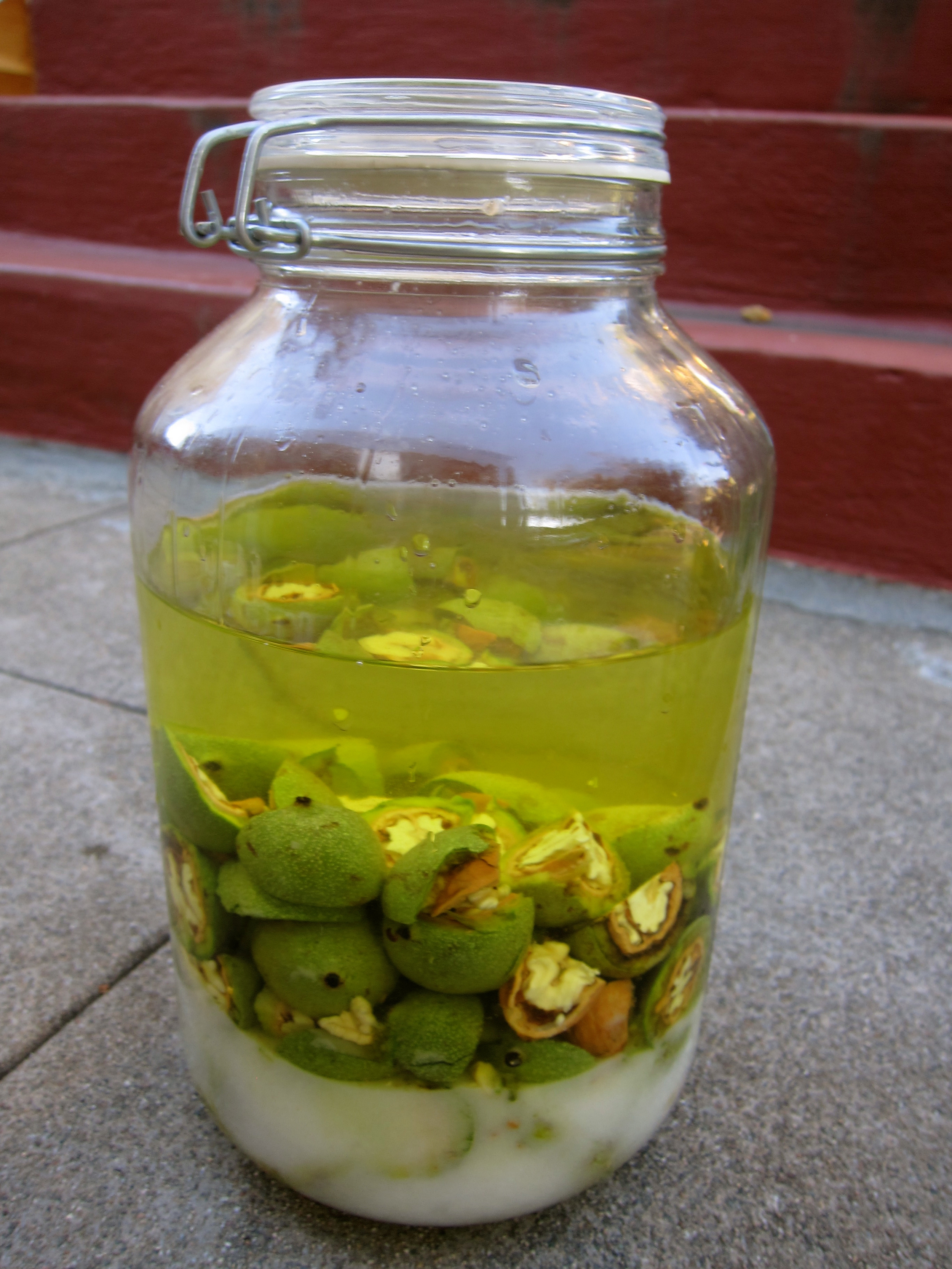
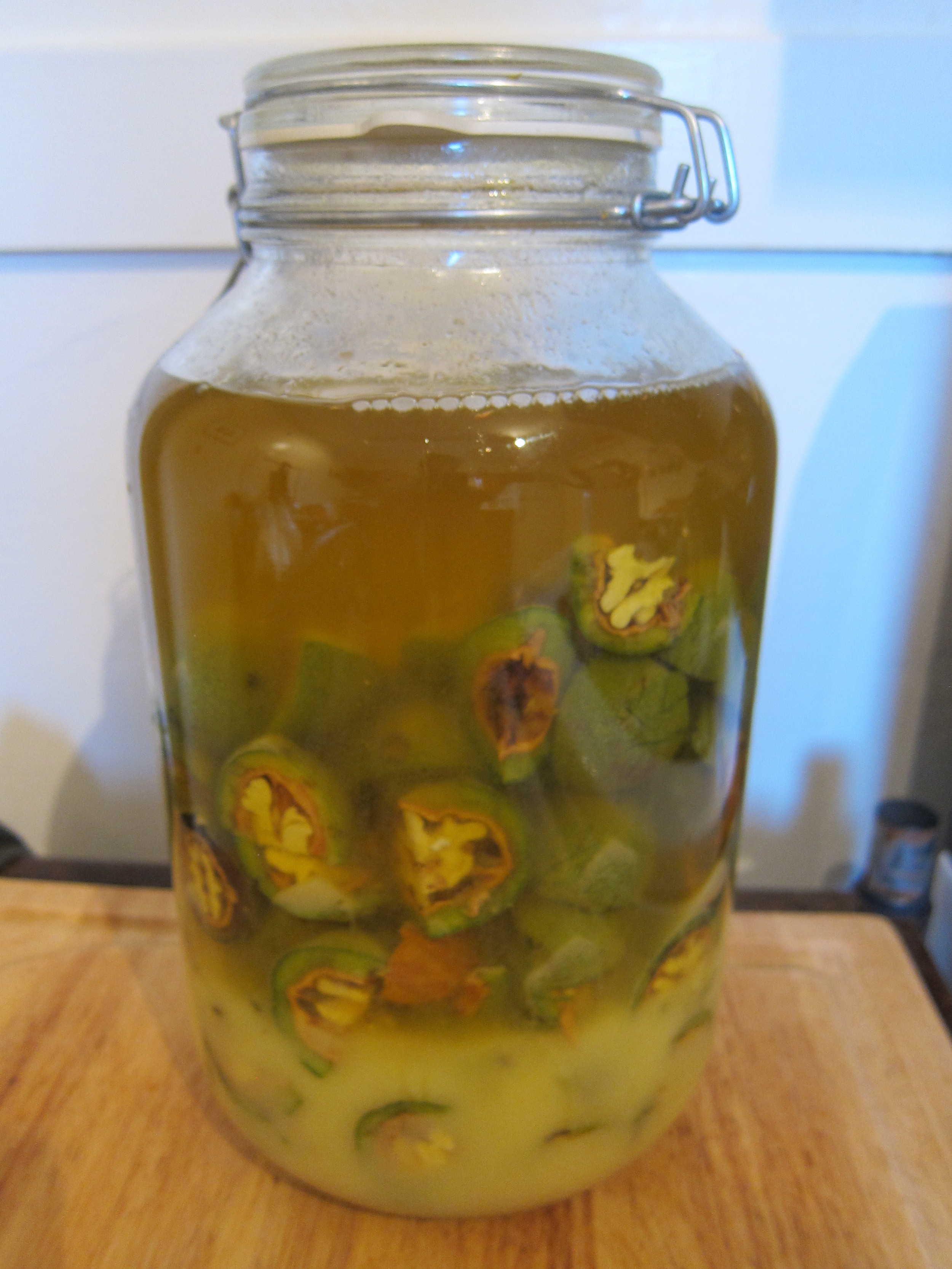
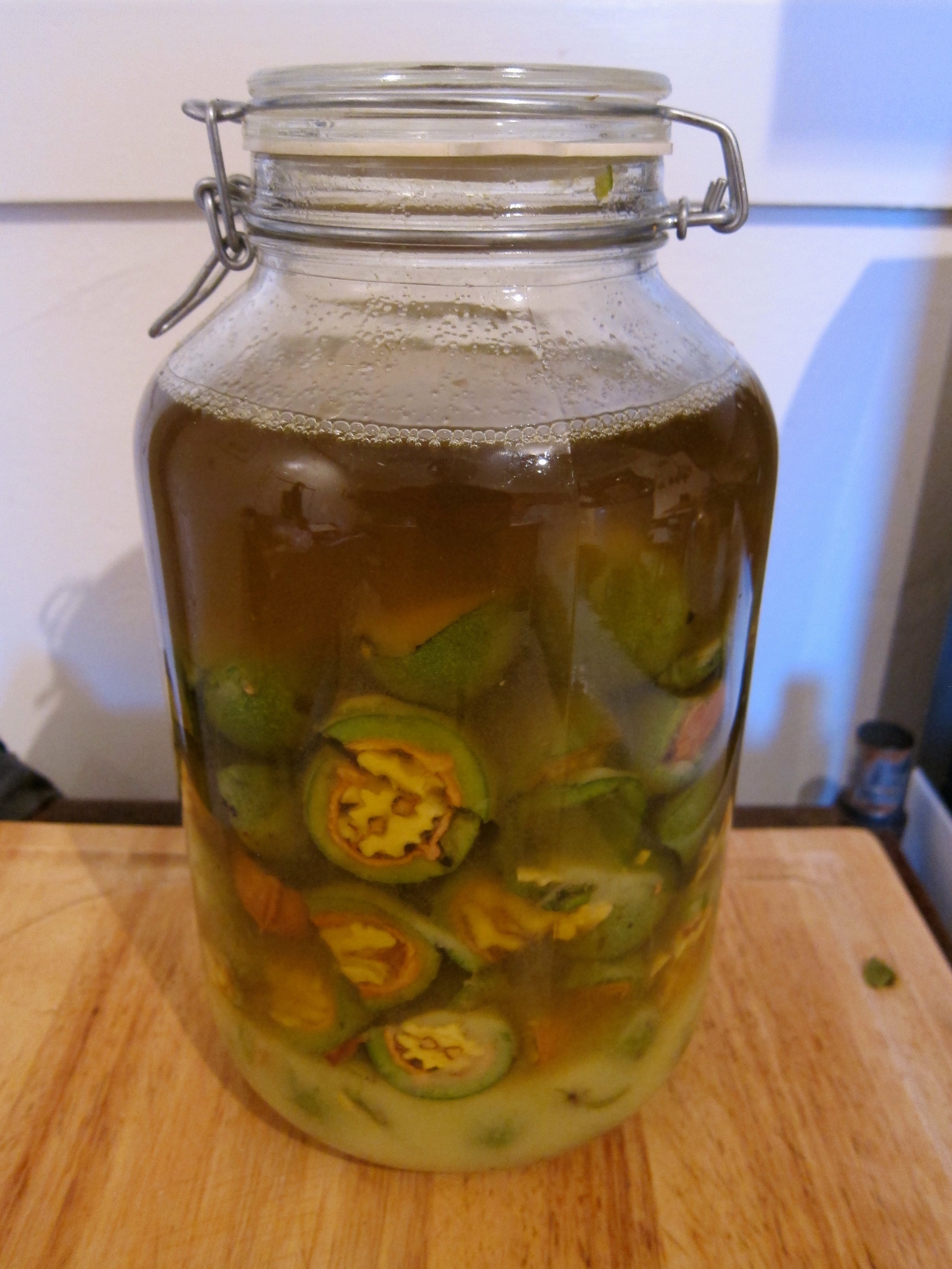
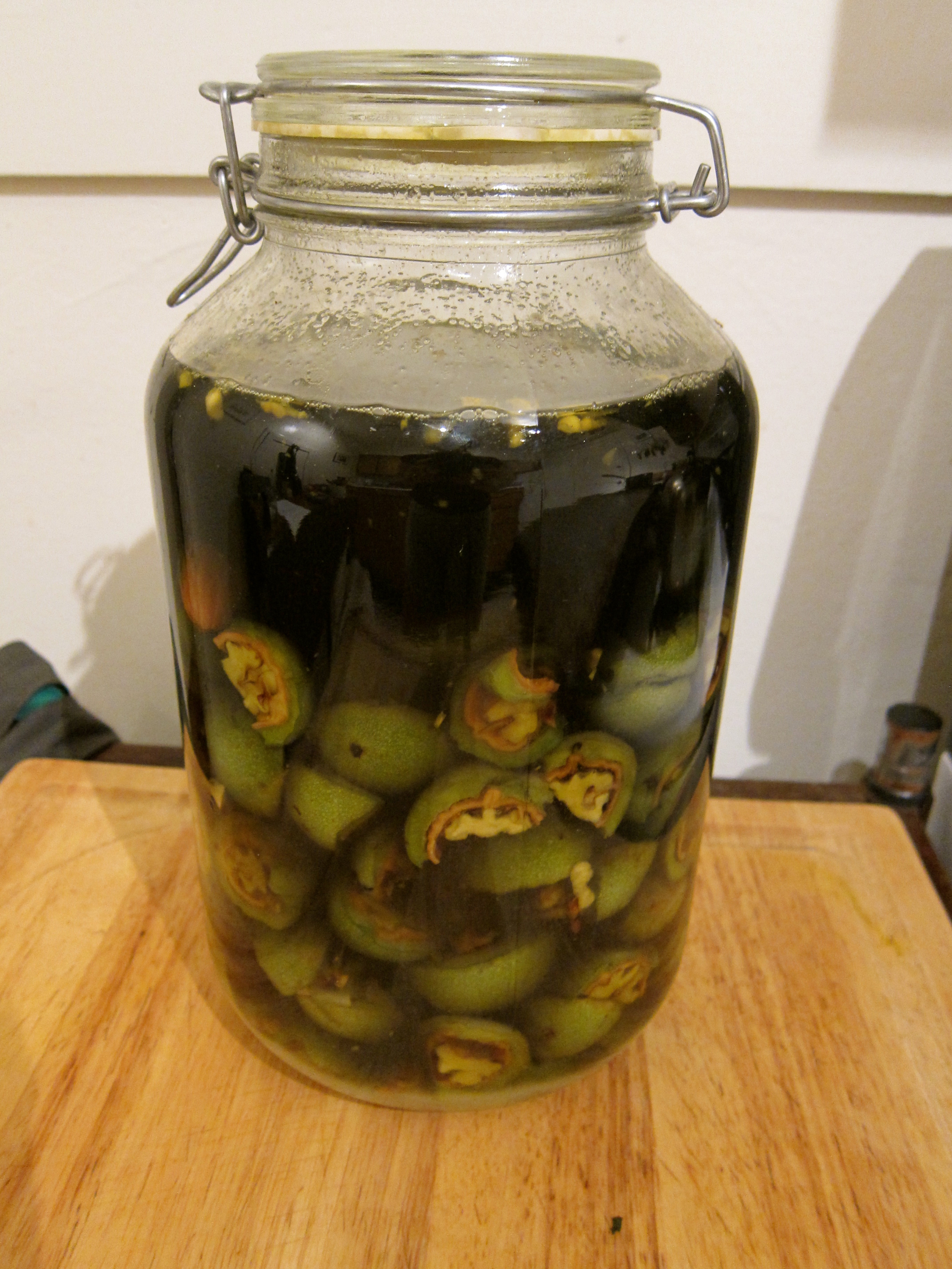
Using a cheesecloth or fine mesh strainer, strain the liquid and discard the walnuts. Add any other ingredients of your choosing (vanilla bean, orange peel, etc.) and pour nocino from the jars into smaller bottles. Close bottles and let the liqueur marinate for another 6 months to 1 year. You can taste the nocino as it rests to learn about the flavor changes and begin drinking once it's to your liking.

If walnuts are harvested too late in the season, the shells will have started to harden.
Dandelion Wine
A classic method for preserving a taste of summer.
I told someone that I had made dandelion wine and they said, “that’s really a thing?”. Yes, it’s a thing. I have always wanted to make dandelion wine - not sure where the desire came from (maybe because how even the sound of it delightfully rolls of the tongue?), but it aches all the same. So finally this spring I set forth on the task and have several delicious looking bottles put up to age from 6-12 months. My plan in to try them in 6 (because I won’t be able to resist) and drink some with others on the Winter Solstice.

1 gallon dandelion flowers, can leave ends of flowers on, but remove stems (your leg muscles may or may not be sore for a few days after this excursion)
2 cups turbinado sugar*
1 1/3 cup honey*
3-4 oranges
2-3 lemons
1-2 teaspoons/1/2 packet yeast (I used champagne yeast for dry, delicate flavor. Bread yeast is not recommended)
Few pinches of yeast nutrient (not necessary, but recommended)
*Sugar quantity will determine potential alcohol and potential sweetness, use more or less depending on your preferences.

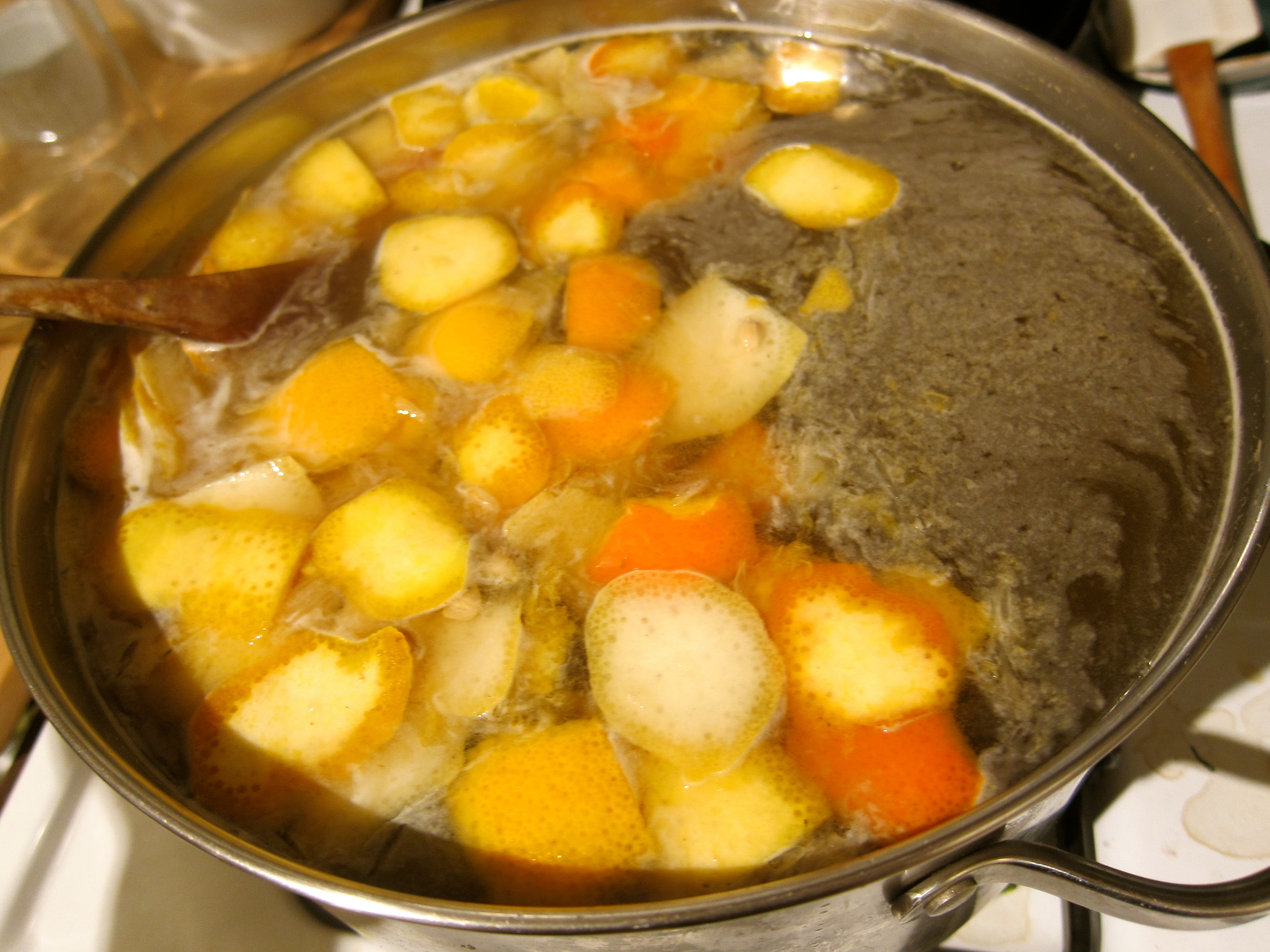
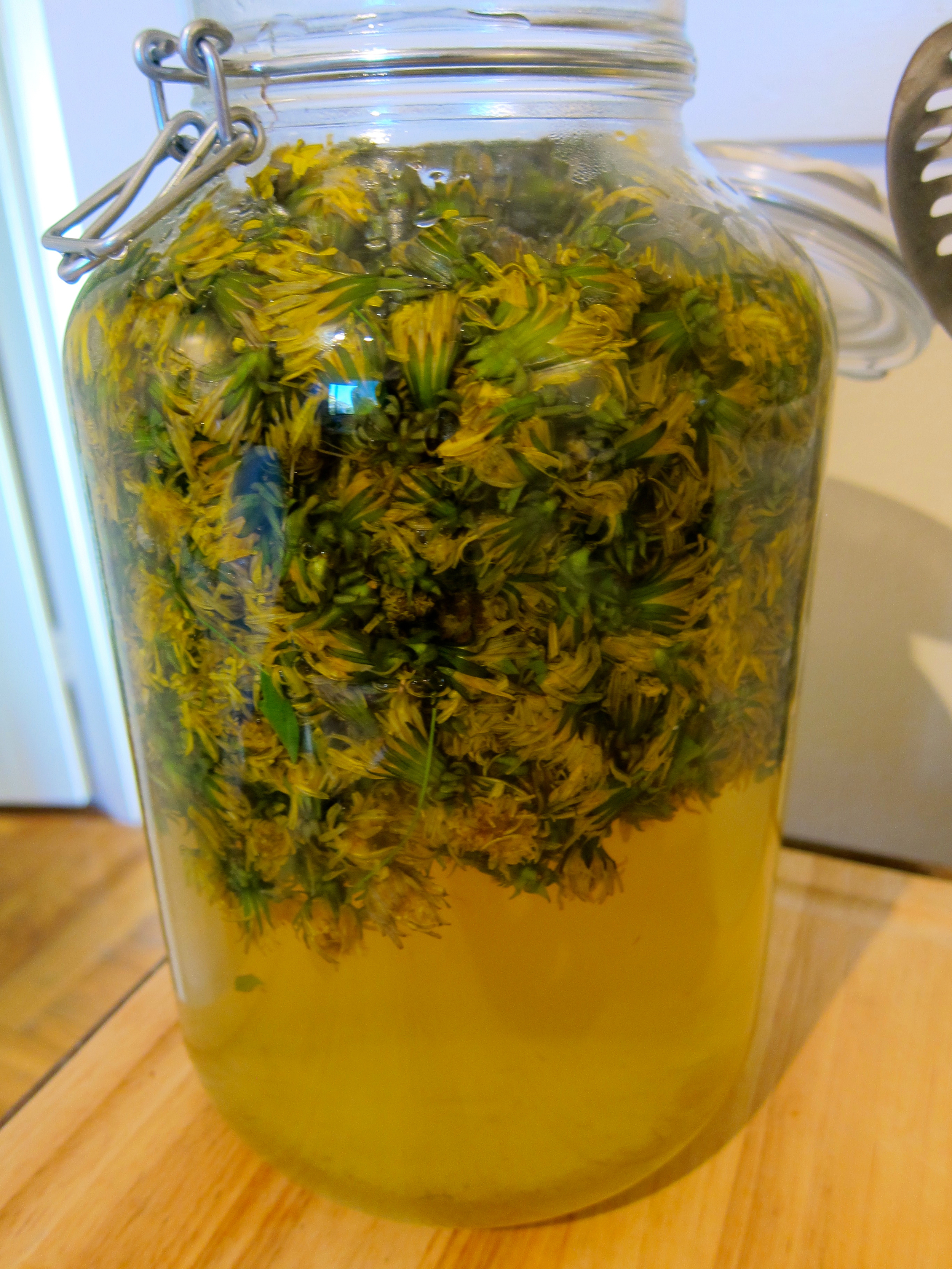
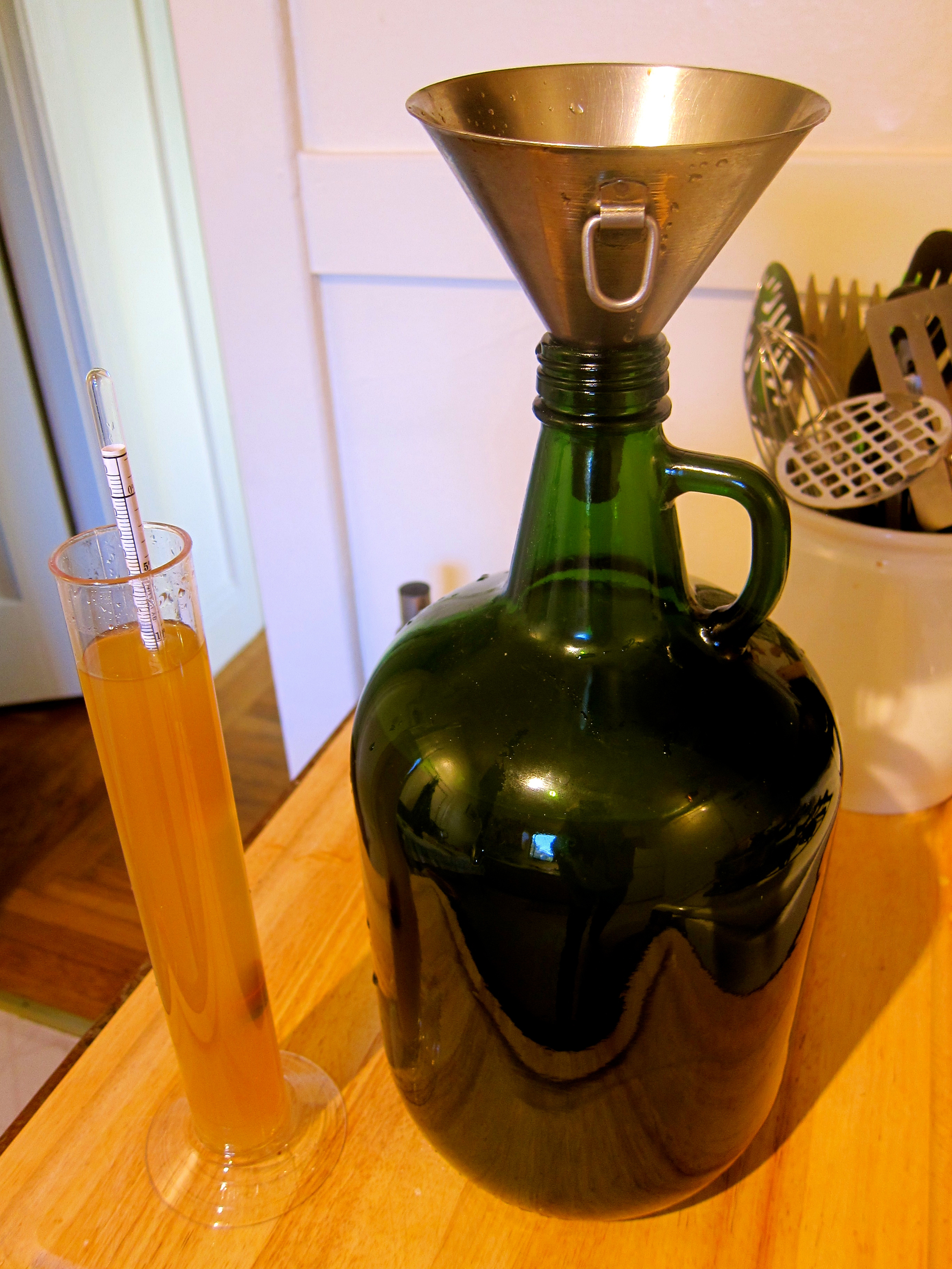
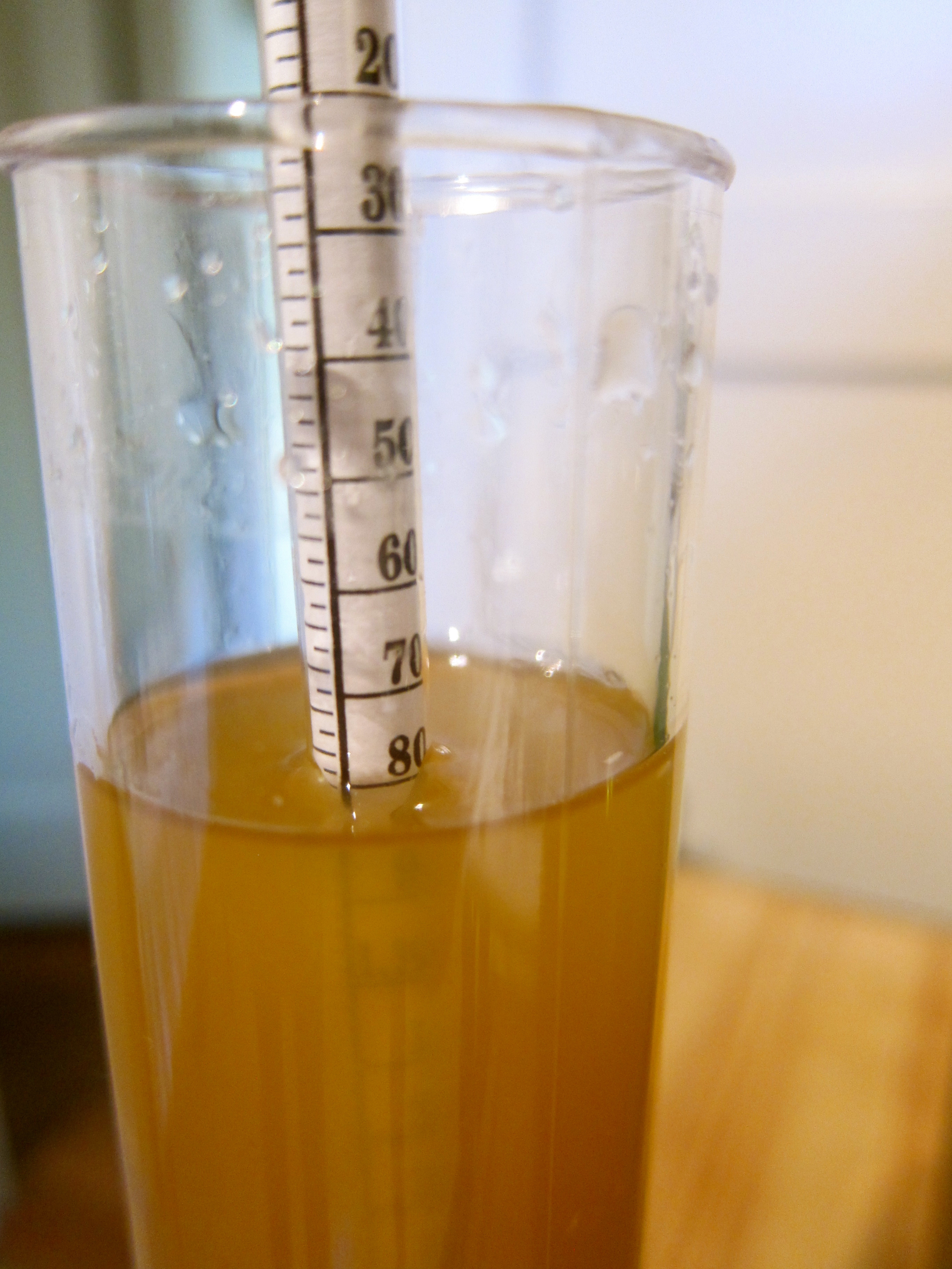
Process One (2 days) - Make Dandelion Infusion
Boil 1 gallon of water, pour over dandelion flowers in glass or food-grade plastic container at least 1.25 gallons large.
Cover and let sit for 48 hours.
Strain out liquid, squeeze flowers to extract remaining liquid.
Process Two (2-3 weeks) - Fermentation
Heat dandelion liquid with sugar, honey, and the juice and skin from the citrus (cut the skin off and slice prior to juicing) for 30 minutes on medium heat, stirring occasionally to dissolve sugar. Cool to lukewarm.
Take the specific gravity or brix to determine your “Potential Alcohol”. Essentially, by measuring the sugar content, you can determine how much nutrient is available for the yeast to turn into alcohol, but depending on where you stop fermentation, your wine will have more or less alcohol. My specific gravity at this point was 1.08 (Brix = 20%), which is a PA of 11%. There’s a calculation that I got really excited about, but ended up using this table.
Put in jug with yeast and nutrient, cork with fermentation lock or cover with cheesecloth (more risky bacteria-wise, I used lock) for 1-3 weeks, or until bubbling stops. You can stop the process anywhere you’d like, depending on desired alcohol content and sweetness (longer=more alcohol, less sweet). I stopped mine after bubbling stopped.
Take specific gravity/brix again so you can determine the alcohol %. My specific gravity was 1.00, or 0% alcohol, meaning that all of the sugar had been eaten by the yeast. This took about 2 weeks because the weather was quite warm. To determine the total alcohol, I just subtract this from the PA, 11-0 = 11%. No residual sugar, which I prefer.
Process Three - Aging (6 months - 1 year)
When your wine has reached the desired alcohol/sugar content, remove from large jug and bottle. I tasted it at this point - definitely tastes like ridiculously young (and not so good wine - but has potential!)
Age 6 months - 1 year in cool place.
See you at the winter solstice!
Update: Here's how it tasted after 6 and 12 months. An 8 month fermentation may be optimal!










